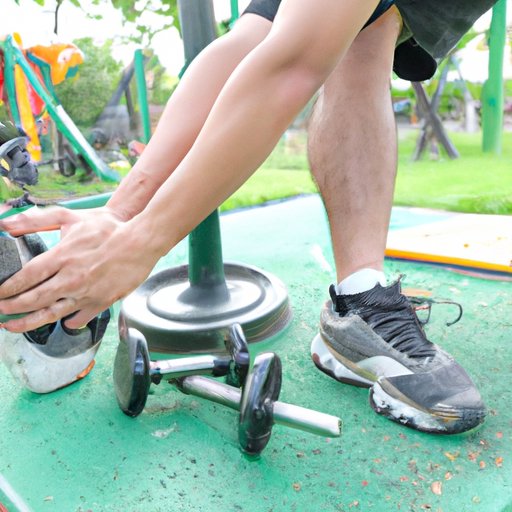
Introduction
How much exercise should you be getting every day? It’s a question that many of us have asked ourselves at some point. With busy schedules and conflicting priorities, it’s easy to put exercise on the back burner. However, daily exercise is crucial for good health, and it’s important to find a routine that works for you. In this article, we will explore the different aspects of daily exercise and provide tips and answers to help you optimize your workouts.
The Science Behind Daily Exercise: How Much is Enough?
The American Heart Association recommends that adults engage in at least 150 minutes of moderate-intensity aerobic exercise or 75 minutes of vigorous aerobic exercise per week. This translates to about 30 minutes a day, five days per week for moderate exercise or 25 minutes a day, three days per week for vigorous exercise.
In addition to the physical benefits of exercise, regular physical activity has been shown to have a positive impact on mental health. Exercise has been linked to a reduction in symptoms of anxiety and depression, an improvement in mood, and better cognitive function. Exercise can also help to reduce the risk of developing various chronic diseases, including heart disease, diabetes, and some types of cancer.
There are many types of exercise that you can engage in to meet these guidelines, including aerobic exercises like running, cycling, or swimming, strength training with weights or bodyweight exercises, and flexibility exercises such as stretching or yoga.
Maximizing Your Workout: Finding Your Ideal Daily Exercise Time
While the recommended guidelines give us a general idea of how much exercise we need, the amount of exercise that is appropriate for each individual can vary depending on several factors, including age, gender, fitness level, and health status. To determine your target heart rate for exercise, subtract your age from 220 and multiply that number by 0.7. This will give you the lower end of your target heart rate range. For the upper end of the range, multiply the same number by 0.85.
Finding the ideal daily exercise time can be a challenge, especially if you have a busy schedule. One way to make sure you are getting enough exercise is to incorporate physical activity into your daily routine. This can include taking the stairs instead of the elevator, parking farther away from your destination, or walking or biking to work if possible. Another option is to break up exercise into shorter sessions throughout the day, such as taking a 10-minute walk during your lunch break or doing a quick yoga routine in the morning.
Breaking Down the Benefits: Why Shorter Workout Sessions Are Better
A common misconception about exercise is that longer workouts are better. However, shorter, more intense workouts can be just as beneficial, if not more so, than longer workouts. High-intensity interval training (HIIT), for example, involves short bursts of intense exercise followed by rest periods. This type of workout has been shown to be more effective at burning fat and improving cardiovascular health than longer, moderate-intensity workouts.
Shorter workouts are also more practical for busy schedules. HIIT workouts can be done in as little as 15-20 minutes, making them a great option for those who want to get a good workout in a short amount of time.
The Myth of the Marathon Workout: How Long Should You Really be Exercising?
It can be tempting to think that longer workouts are better for your health. However, overexercising can actually be harmful to your health. Overexercising can lead to injury, burnout, and even compromised immune function. It is important to find a balance between getting enough exercise and not overdoing it.
To exercise safely and effectively, it’s important to listen to your body and avoid pushing yourself too hard too quickly. Start with shorter workouts and gradually increase the length and intensity of your workouts as your fitness level improves.
The Ultimate Guide to Daily Exercise: Tips and Tricks for Optimal Health
If you want to get the most out of your exercise routine, it’s important to mix it up and try new things. Cross-training with different types of exercises, such as strength training and yoga, can help to prevent boredom and reduce the risk of injury. Varying your workouts can also help to target different muscle groups and prevent plateaus in your fitness progress.
Other tips for staying motivated to exercise include finding a workout partner, setting realistic goals, and tracking your progress. It’s also important to make sure you are eating a healthy, balanced diet and getting enough sleep, as these factors can also impact your health and fitness levels.
Conclusion
Daily exercise is crucial for good health, but the amount of exercise that is appropriate can vary from person to person. Finding the ideal daily exercise time can be a challenge, but incorporating physical activity into your daily routine and breaking up workouts into shorter sessions can be effective strategies. Remember to listen to your body and avoid overexercising in order to exercise safely and effectively. With these tips and tricks, you can optimize your workouts and take your health to the next level.




